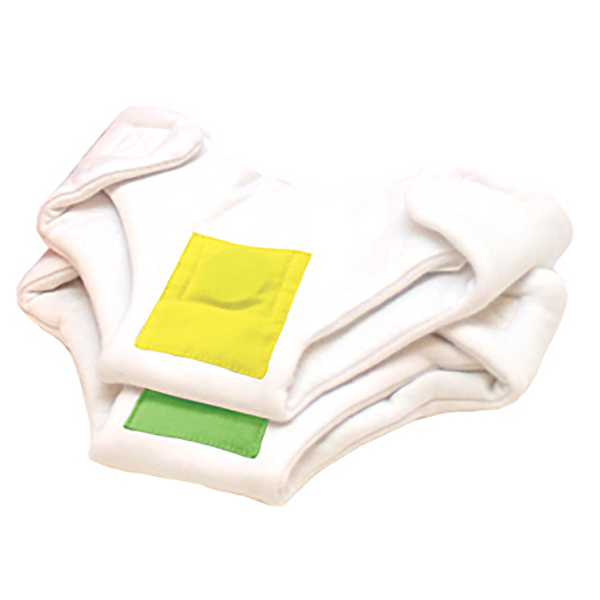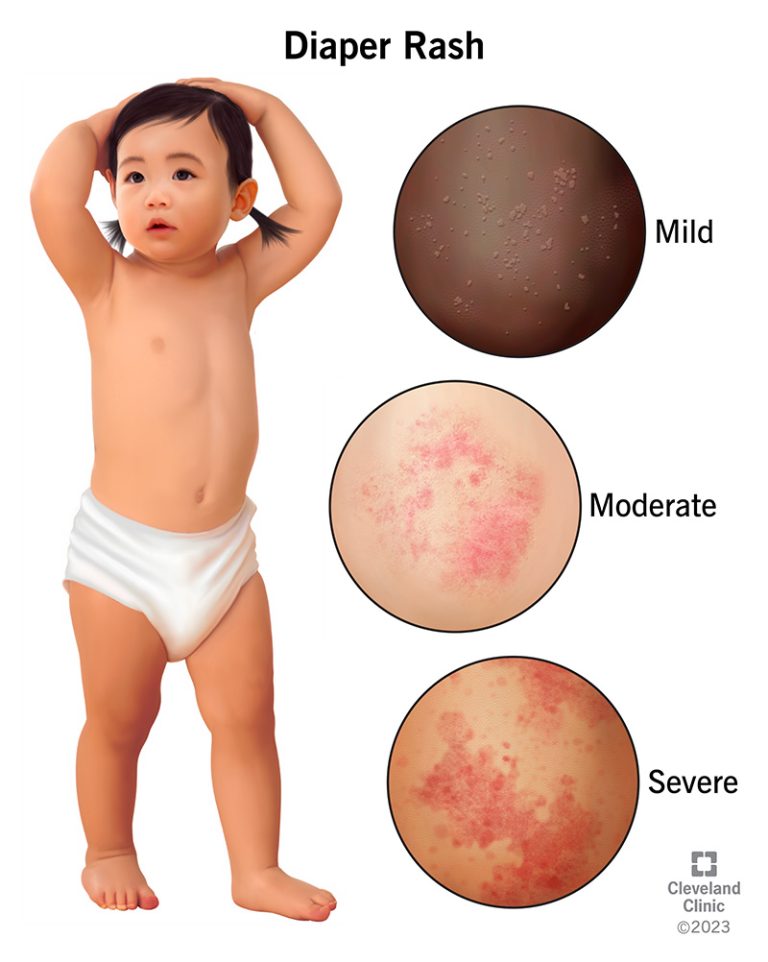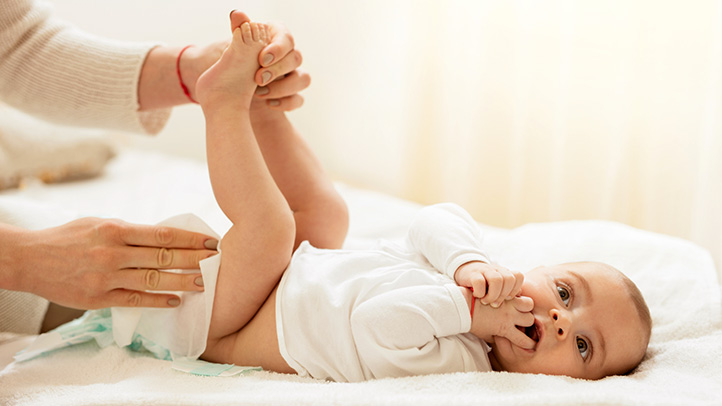How to Help Baby With Bleeding Diaper Rash: Effective Remedies
Gently cleanse the area with lukewarm water and pat dry. Apply a thick layer of zinc oxide diaper cream.
Bleeding diaper rash can cause significant discomfort for babies. Prompt and effective treatment is essential to alleviate pain and prevent further irritation. Parents should ensure that the diaper area is kept clean and dry. Using a mild, fragrance-free cleanser can help avoid additional irritation.
Letting the baby go diaper-free for short periods can also promote healing. Applying a zinc oxide-based cream forms a protective barrier on the skin. This cream helps to soothe the rash and expedite the healing process. Consult a pediatrician if the rash persists or worsens despite home treatments.
Identifying Diaper Rash
Understanding diaper rash is crucial for every parent. Diaper rash causes discomfort and distress for babies. Early identification helps in treating it effectively. Here’s a guide to recognizing diaper rash.
Common Symptoms
Diaper rash has several visible symptoms. Recognizing these signs early can help in quick treatment:
- Red patches: Look for red or pink patches on the baby’s skin.
- Swelling: The affected area may appear swollen and puffy.
- Small bumps: Tiny raised bumps might develop in the rash area.
- Dry skin: The skin may become dry or flaky.
- Warm to touch: The rash area may feel warmer than the surrounding skin.
- Discomfort: Baby may show signs of discomfort and fussiness.
When To Seek Medical Help
It’s important to know when to consult a doctor. Here are some instances:
- Bleeding: If the rash starts to bleed, seek medical advice.
- Pus or blisters: Presence of pus or blisters indicates an infection.
- Fever: If baby develops a fever along with the rash.
- No improvement: Rash doesn’t improve after a few days of home treatment.
- Spreading rash: The rash spreads to other areas of the body.
Identifying and treating diaper rash early can prevent complications. Always monitor the baby’s skin for any changes.

Credit: community.whattoexpect.com
Causes Of Diaper Rash
Moisture, friction, and prolonged exposure to dirty diapers can cause diaper rash. Keep the area clean and dry, and apply a soothing barrier cream to help your baby with bleeding diaper rash.
Diaper rash can be painful for babies. Understanding the causes helps in preventing and treating it effectively. Let’s explore some common causes.
Irritants And Allergens
Diaper rash often occurs due to irritants and allergens. Wet diapers, soaps, and wipes can irritate the baby’s sensitive skin. Chemicals in diapers or wipes can cause an allergic reaction.
Consider the table below for common irritants:
| Irritant | Description |
|---|---|
| Wet Diapers | Prolonged exposure to moisture can cause skin irritation. |
| Soaps | Harsh soaps can strip natural oils from the skin. |
| Chemicals in Wipes | Fragrances and preservatives can trigger allergies. |
Bacterial And Yeast Infections
Another cause is bacterial and yeast infections. Warm, moist areas are ideal for bacteria and yeast to grow. This can lead to severe diaper rash.
Signs of infections may include:
- Red, swollen areas
- Pus-filled bumps
- Fever
If you notice these signs, consult a pediatrician. They can prescribe the right treatment for your baby.
Immediate First Aid
Bleeding diaper rash can be alarming. Immediate first aid helps reduce pain and prevent infection. Follow these steps to provide quick relief for your baby.
Cleaning The Area
First, wash your hands thoroughly. Use warm water and a soft cloth to gently clean the affected area. Avoid using baby wipes as they may contain alcohol or fragrances, which can irritate the skin. Pat the area dry with a clean towel.
| Do’s | Don’ts |
|---|---|
| Use warm water | Use baby wipes |
| Pat dry with a towel | Rub the skin |
Soothing The Skin
Apply a thin layer of diaper rash cream containing zinc oxide. This creates a barrier and promotes healing. Avoid using powders as they can cause further irritation.
- Choose a cream with natural ingredients.
- Gently spread the cream over the rash.
- Let the area air dry for a few minutes.
Next, dress your baby in loose-fitting clothing. This allows air to circulate and keeps the area dry. Check the diaper frequently and change it as soon as it becomes wet.
- Apply cream.
- Air dry the area.
- Dress in loose clothes.
- Change diapers often.

Credit: www.hmpgloballearningnetwork.com
Home Remedies
Dealing with a baby’s bleeding diaper rash can be challenging. Thankfully, several home remedies can soothe your baby’s delicate skin. These remedies are simple, natural, and effective. Let’s explore some of the best options to help your little one feel better quickly.
Natural Oils
Natural oils are excellent for treating diaper rash. They are gentle and moisturizing. Here are some options:
- Coconut Oil: Coconut oil has anti-inflammatory properties. Apply a thin layer to the affected area.
- Olive Oil: Olive oil is rich in antioxidants. It can help heal the skin. Dab a small amount on the rash.
- Almond Oil: Almond oil is soothing and hydrating. Use it to keep the baby’s skin soft and rash-free.
Baking Soda Baths
Baking soda baths can reduce diaper rash irritation. Baking soda helps balance the skin’s pH levels. Here’s how to prepare a baking soda bath:
- Fill the bathtub with warm water.
- Add 2 tablespoons of baking soda.
- Mix until the baking soda dissolves completely.
- Let your baby soak for 10 minutes.
- Pat the baby dry with a soft towel.
Repeat this bath once daily until the rash improves. Always ensure the water is not too hot.
Over-the-counter Treatments
Dealing with a bleeding diaper rash can be stressful. Thankfully, there are many over-the-counter treatments available. These treatments can help soothe and heal your baby’s sensitive skin. Below are some of the best options for treating diaper rash.
Diaper Rash Creams
Diaper rash creams are a popular choice. They create a barrier between the skin and the diaper. This helps keep moisture away, reducing irritation.
- Zinc oxide: This is a common ingredient in diaper rash creams. It helps heal the skin and provides a protective layer.
- Petroleum jelly: This can also be used as a barrier. It locks in moisture and protects the skin.
Antifungal Ointments
If the diaper rash is caused by a yeast infection, antifungal ointments can help. These ointments kill the fungus that causes the infection.
- Clotrimazole: This is a common antifungal cream. It is safe for babies and effective against yeast infections.
- Nystatin: Another effective antifungal ointment. It is often prescribed by doctors for severe cases.
Always check with your doctor before using new treatments on your baby. Your baby’s skin is delicate and needs the right care.

Credit: www.researchgate.net
Preventive Measures
Preventing diaper rash is always better than treating it. By adopting some preventive measures, you can keep your baby’s skin healthy and rash-free. Here are some effective strategies to help prevent bleeding diaper rash.
Frequent Diaper Changes
Changing your baby’s diaper often is crucial. Wet or soiled diapers irritate the skin and can lead to rashes.
- Check the diaper every two hours.
- Change the diaper immediately if it is wet or dirty.
- Clean your baby’s skin with warm water and a soft cloth.
- Allow the skin to dry completely before putting on a new diaper.
Choosing The Right Diapers
Using the right diapers can also help prevent rashes. High-quality diapers offer better protection and comfort.
| Feature | Benefit |
|---|---|
| Breathable Material | Reduces skin irritation |
| Soft Inner Layer | Provides comfort |
| High Absorbency | Keeps the skin dry |
| Right Size | Prevents leaks and friction |
Ensure the diapers fit well and are not too tight. Tight diapers can cause friction, leading to rashes.
Dietary Considerations
Dietary considerations play a crucial role in managing and preventing diaper rash. What your baby eats can directly impact their skin health. Below are key dietary tips to help your baby with bleeding diaper rash.
Breastfeeding Tips
Breast milk is gentle on a baby’s digestive system. It can help minimize the risk of diaper rash. Here are some tips to keep in mind:
- Hydration: Drink plenty of water to keep your milk supply strong.
- Avoid Spicy Foods: Spicy foods can irritate your baby’s digestive system.
- Dairy Intake: Some babies are sensitive to dairy. Monitor your diet for any reactions.
Solid Food Precautions
Introducing solids is a milestone, but it requires caution to prevent diaper rash:
- Introduce Slowly: Add one new food at a time. Watch for reactions.
- Avoid Acidic Foods: Foods like tomatoes and citrus can irritate the skin.
- High-Fiber Foods: Ensure a balanced diet to prevent constipation, which can worsen diaper rash.
Here’s a table summarizing foods to include and avoid:
| Foods to Include | Foods to Avoid |
|---|---|
| Bananas | Tomatoes |
| Oatmeal | Oranges |
| Sweet Potatoes | Strawberries |
By paying attention to your baby’s diet, you can help prevent and manage diaper rash more effectively.
When To Consult A Pediatrician
Bleeding diaper rash can be distressing for both baby and parents. While mild cases can be treated at home, there are situations where professional medical advice is necessary. Knowing when to consult a pediatrician ensures your baby gets the best care possible.
Persistent Rash
If the rash does not improve after a few days of home treatment, you should see a doctor. A persistent rash might indicate a more serious underlying issue. Use over-the-counter creams and keep the area dry. Change diapers frequently to prevent further irritation.
| Duration of Rash | Action |
|---|---|
| 1-3 days | Monitor and treat at home |
| 4+ days | Consult a pediatrician |
Signs Of Infection
An infected diaper rash requires immediate medical attention. Look for the following signs of infection:
- Pus or yellowish discharge
- Fever accompanying the rash
- Blisters or open sores
- Increased redness and swelling
If you notice any of these signs, contact your child’s pediatrician right away. They might prescribe antibiotics or recommend other treatments. Keeping your baby’s skin clean and dry can help prevent infections.
Frequently Asked Questions
What Causes Bleeding Diaper Rash?
Bleeding diaper rash is often caused by prolonged exposure to wetness. It can also result from friction, infection, or allergic reactions. Keeping the area clean and dry can help prevent it.
How Can I Treat Bleeding Diaper Rash?
To treat bleeding diaper rash, gently clean the area with water. Pat it dry and apply a zinc oxide-based cream. Avoid using wipes with alcohol or fragrance.
Are There Home Remedies For Bleeding Diaper Rash?
Yes, some home remedies include oatmeal baths and coconut oil application. Both can soothe the skin and promote healing.
When Should I See A Doctor For Diaper Rash?
See a doctor if the rash doesn’t improve in a few days. Also, seek medical advice if it gets worse or shows signs of infection.
Conclusion
Caring for a baby with bleeding diaper rash requires patience and gentle care. Use soothing creams, keep the area dry, and consult your pediatrician. These steps can provide relief and prevent further irritation. Always prioritize your baby’s comfort and health to ensure quick healing and a happy baby.





